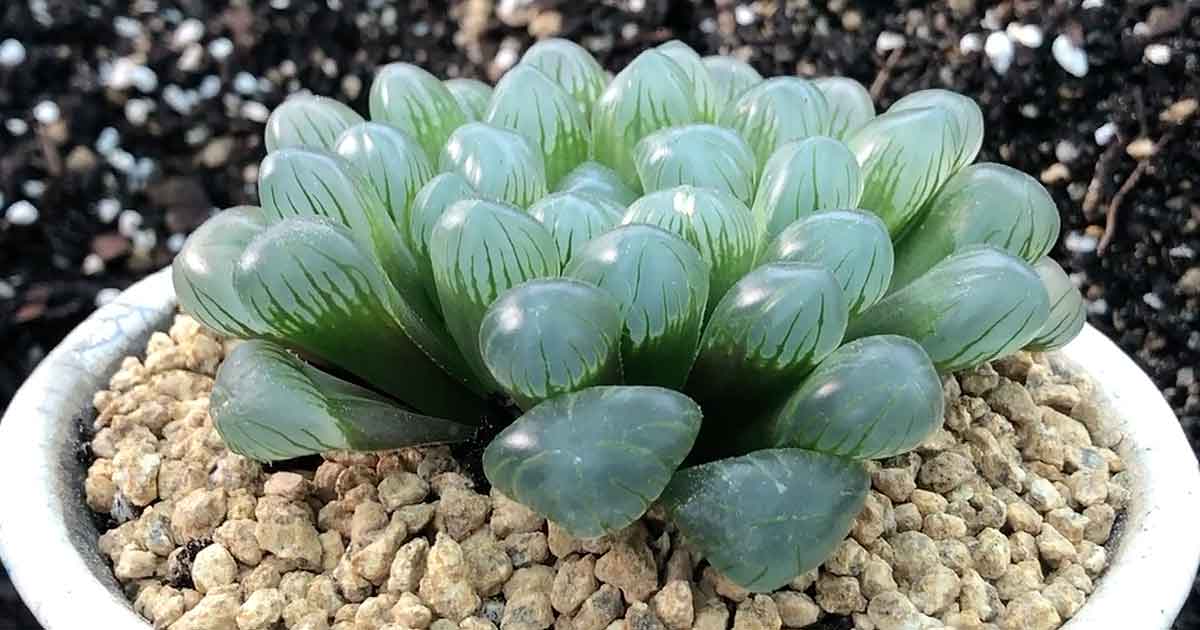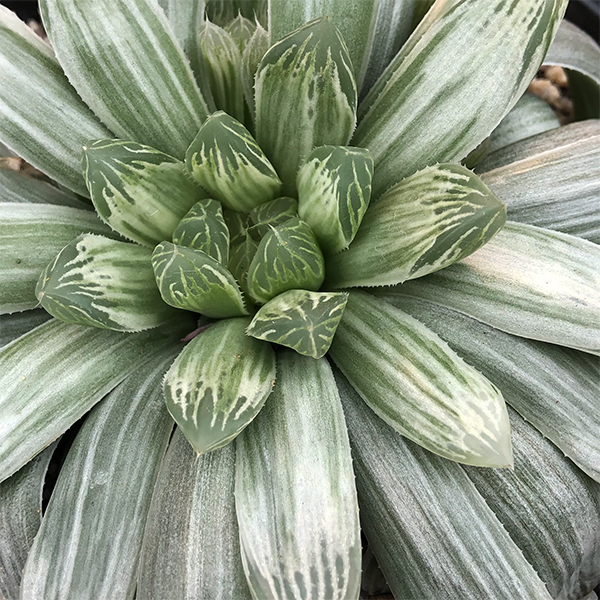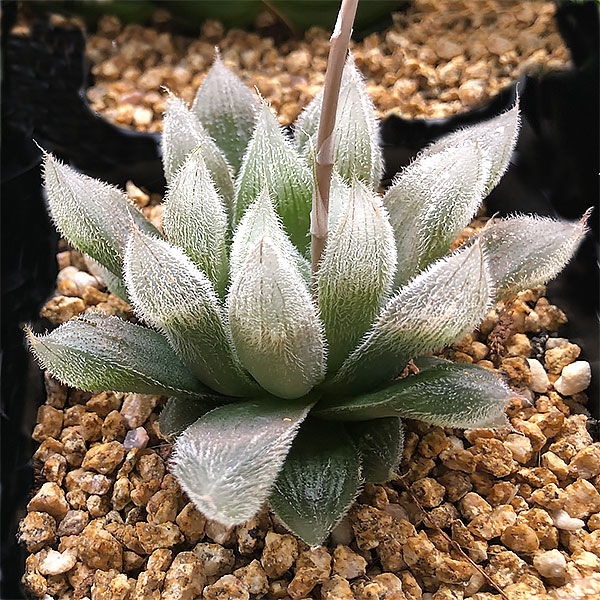
Haworthia cooperi is a succulent that does not need full sun, in fact it is a great variety for growing indoors.
As an indoor plant it is very easy care and is not a large growing plant so those with smaller appartments. who are looking for a very stylish succulent may like to explore the varieties available.
Grown for the windows that give the plant a translucent appearance, a number of distinct types are available.

H.cooperi OB1 pictured top is an outstanding example, translucent ball shaped leaves with marked windows that allow light to pass through give that WOW factor.
It will grow in good filtered light to around 70% shade and should be repotted once a year.
These plants are sometimes called ‘The Window Succulent’ or ‘Crystal Plant’ and when we look at the leaves we can easily see why.
H. ‘Silver Swirls’ is one of the best variagated cooperi types. Very different foliage to OB1, finger like foliage an olive green with a frosted white and again that translucence that is much sought after.
One of the real standouts, that is right up ther with OB1 is Haworthia cooperi var. venusta.
Where this one stands out is with the fine hairs on the leaves, silvery white, again on finger like foliage that forms a neat rosette.

The leaves tend to point upwards and are separated enough to allow good amounts of that filtered light to create a magical effect.
How to grow Haworthia cooperi
A well drained potting soil and good filtered light are the two main requirements.
These are not a plant that needs mist spraying, they also do not need fertilizer except when repotting.
As they grow, all varieties will send out offsets or ‘Pups’ and will over time form a clump. If you want that ‘specimen plant’ look you will need to remove the pups and repot each year.
It is sometimes said that these plants grow well in a shallow dish, we prefer to use a deeper pot as most Haworthia species do develop good root systems.

